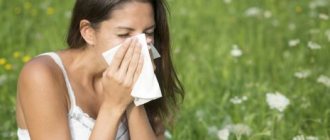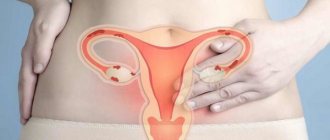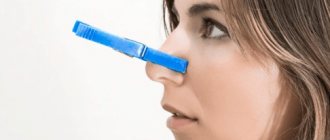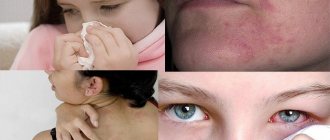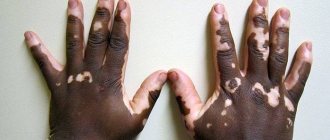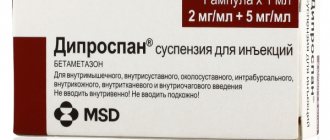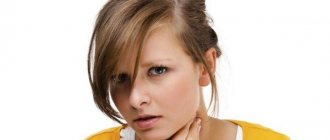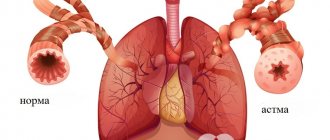Does your child have a runny nose? It would seem nothing serious, but the disease cannot be neglected. Its medical name is rhinitis. This is an inflammation of the mucous membrane of the upper respiratory canals. A child's body is more sensitive to low temperatures and various types of viruses. The disease is very common and in itself does not pose a great danger. But, if untimely and incorrectly treated, it can lead to serious consequences. The cause of rhinitis in children can be both allergic reactions (dust, strong odors, pollen) and the initial stages of many infectious diseases (flu, colds).
When is hospitalization needed to treat persistent rhinitis in children?
The treatment regimen for rhinitis in children is prescribed by an ENT doctor. As a rule, therapy is carried out on an outpatient basis: that is, everything that the doctor prescribes, parents must do at home. But sometimes such measures are not enough, and the child must be taken to the hospital.
Hospitalization for the treatment of prolonged rhinitis in children is used only in the most extreme cases:
- when the child is less than six months old (0-6 months);
- if there is a temperature, fever, state of convulsive readiness;
- hemorrhagic syndrome is present;
- sudden intoxication, respiratory failure;
- rhinitis developed complications.
These are truly extreme measures and account for a very small percentage of cases in general practice. Therefore, treatment of a runny nose in a child, even a severe one, is carried out at home, after consulting a doctor, after receiving a detailed diagram.
Nasal rinsing
Vasoconstrictor drops and sprays are not used in the treatment of newborns and infants, so frequent (5-7 times a day) nasal rinsing can cure a severe runny nose in a child under one year old. Before the procedure, parents need to clear the nasal sinuses of accumulated mucus. To do this, use an aspirator or small syringe.
At home, it is best to rinse children's noses with a solution of rock or sea salt. You can prepare it as follows:
- Boil a liter of filtered water and dilute a teaspoon of salt in it.
- Cool and strain the dilution through several layers of sterile bandage.
Pharmacies sell a ready-made isotonic solution in glass bottles of 200, 400 and 500 ml. It is better to purchase several small packages, since after opening the bottle the shelf life of the drug is significantly reduced. Sea salt is an active ingredient in many medications designed to treat a runny nose at home:
We also recommend:
How to treat thick yellow snot in a child
- Aqua Maris,
- Otrivin,
- Rinosol,
- Aqualor,
- Physiometer.
Nasal sprays and drops are intended for children from the first month of life. The drugs allow you to treat thick snot in the nasopharynx in a child, which is formed during a respiratory infection. Pediatricians recommend that after rinsing the nasal sinuses, be sure to rinse your throat. The fact is that the sputum, which has become more liquid, flows down the back wall of the larynx. Most of it will be swallowed by the child, but the rest can cause inflammation. You can gargle with the same saline solution or infusions of medicinal herbs - marigolds, sage, chamomile.
When rinsing the baby's nose, do not use a syringe or aspirator. An excessively strong stream of medication will cause mucus with bacteria or viruses to enter the maxillary sinuses and cause sinusitis. Parents should carefully pipette the isotonic solution while holding the child's head with their hand.
Treatment of acute rhinitis in children
To cure a child’s severe runny nose, which occurs in an acute form, as practice shows, a lot of effort will be required.
Treatment of acute rhinitis in children is carried out as follows:
- First, the cavity is cleaned of secretions, special attention is paid to the hygiene of the nose of newborns and infants;
- provide relief from swelling (if the swelling is strong and disturbing);
- suppress infection (antiviral drugs, antibiotics - strictly as prescribed).
With a mild course, an acute runny nose stops in three to four days, normally in seven to ten days.
To treat a prolonged runny nose in children that lasts more than three weeks, it is necessary to undergo additional examinations.
While rhinitis is still in its early stages, distracting procedures can work, for example, a hot foot bath in combination with the application of mustard plasters to the calf muscles. The duration of such procedures is no more than ten to fifteen minutes (in no case overnight!). Then the child is given hot tea, sometimes paracetamol, and sent under the covers to bed. In approximately half of the cases, the runny nose stops within two days after such shock remedies: the distraction worked.
If it is not possible to cure a child’s persistent runny nose as quickly as possible, and the stages of rhinitis continue to develop further, then therapy will certainly require the use of special equipment.
For effective treatment of acute runny nose in children, the following are used:
- local antiseptic drugs;
- vasoconstrictor drugs;
- antihistamines, they have a decongestant effect;
- interferon preparations and interferon inducers;
- nasal drops with immunomodulatory effects;
- nasal rinses.
How to treat rhinitis in children if complications arise? In this case, antibacterial or antiviral drugs and nasal sprays based on glucocorticosteroids may be prescribed. On the recommendation of a doctor, you can combine drug treatment with physiotherapeutic procedures: ultraviolet irradiation of the nasal cavity, UHF.
Important: physiotherapy is contraindicated if the patient’s temperature is above 37 °C.
Treatment of acute rhinitis in children at the third stage is carried out with the use of astringent and antimicrobial agents (collargol or protargol in a solution of 3-5%, albucid in a solution of 20%), physiotherapy is continued.
Inhalations
Inhalations will help cure a child’s persistent runny nose. To carry out the procedures, compressor or ultrasonic nebulizers equipped with special compartments for solutions are used. The operating principle of the device is to convert the liquid dosage form into fine vapor. It penetrates the child’s nasal passages and is evenly distributed on the mucous membranes, stopping inflammation and eliminating swelling. The following drugs are used for inhalation:
- Sinupret in solution;
- Chlorophyllipt;
- 0.9% sodium chloride solution;
- Fluimucil;
- Dioxidine.
Inhalation products must be properly diluted with isotonic solution. Its amount is determined by the pediatrician, taking into account the origin of the infectious agents, the weight and age of the child. Modern nebulizers are equipped with nasal masks of various sizes, which are intended for both newborns and older children. It is advisable to purchase such a device for parents whose children suffer from respiratory infections more than 5-6 times a year.
Inhalation with alkaline mineral water will help cure a runny nose in a baby. Borjomi, Nagutskaya, Essentuki, Slavyanovskaya, Smirnovskaya have the greatest therapeutic effectiveness. Mineral waters are not diluted with an isotonic solution, but are poured into the medicine compartment undiluted. This method of treating rhinitis significantly speeds up recovery by moisturizing the nasal membranes, facilitating breathing and regulating the mucus secreted by the glands.
Inhalations with Chlorophyllipt will help ease your baby's breathing and quickly cope with a runny nose.
Proper treatment of persistent runny nose in young children with salt preparations
Instilling saline solutions into the nose and rinsing with saline preparations can be beneficial if the treatment of a runny nose in children is carried out correctly.
Firstly, it will be difficult to mix salt and water in the correct proportion on your own: if you go a little too far with the amount of salt, the solution no longer heals, but burns the delicate mucous membrane of the nose, causing it to become irritated and inflamed. It is better to treat a runny nose in children by taking a drug such as a ready-made pharmacy hypertonic saline solution - sodium chloride (NaCl). It has just such a concentration that it helps, rather than hinders, pulling excess mucus out of the nose.
Secondly, in order not to supply the inflamed nose with a new assortment of microbes and not to acquire, for example, purulent sinusitis instead of ordinary rhinitis, you need to draw the saline solution into a sterile syringe, and then drip it into the nose, disconnecting the needle. One drop in each nostril, then blow your nose. But there is an easier and, most importantly, safe way to treat runny nose in young children! Ready-made drops and sprays with sea water negate the need for such ritual dances, especially since the parents of a sick child already have something to do.
What is the best way to treat a runny nose in a child, what nasal rinse should I choose at the pharmacy? Let's say there is a product X and a product N. Product X is a bottle, one-third filled with herbal extract with antiseptic properties. According to the instructions, you need to add water to it. Of course, strictly boiled, from the tap under no circumstances! But is boiled water always ideal to serve as the basis for medicine? We all know how quickly filters get clogged and what kind of scale accumulates in a kettle. This kind of water should not be dripped into your nose! But this is not the only question that the buyer will have. What temperature should the water be? What exactly will be the final concentration? To treat a runny nose in a child at home, all this is beyond the power of an ordinary person, much less a tortured parent of a sick child. And this is not so bad, because then the resulting mixture under pressure, when pressing the bottle, should be poured into the child’s nose. But how to control blood pressure? You cannot feel for your baby how intensely the jet hits inside. What happens if you overdo it? There is a risk of water getting into the maxillary and frontal sinuses, and there it is not far from sinusitis. So they treated my nose...
And if you look at product N, it will be a sealed iron bottle that contains a sterile solution completely ready for use (I won’t tire of repeating it, this is very important!). In addition, it will have a dispenser, when pressed, a stream of solution will be delivered into the nose with a gentle intensity verified by medical recommendations. So, of course, with both hands for the N remedy.
To effectively treat a runny nose in a child, be sure to take the “children’s” product: everything in it is designed specifically for small noses: both the jet pressure and the concentration of the solution.
Life situations are, of course, different. Let’s say, in camping conditions there is no ready-made solution, is it possible to mix salt and warm boiled water yourself and irrigate your nose? You can, no more than one teaspoon per glass of water, but is it necessary? Rinsing and irrigating the nose with salt water, even sea water, has been greatly overrated recently, including among parents. This is a temporary, supportive way to treat a runny nose in a child. Children are not sea mammals; the constant exchange of “fountain in - fountain out” does not bring any benefit.
The right approach to treatment
Treating snot in infants is especially problematic. The small nose contains a small number of glands that produce mucus to remove pathogenic bacteria and viruses. In combination with immunity that has not yet fully formed, the likelihood of the spread of infectious pathogens into the lower respiratory tract increases. Therefore, treatment of runny nose in newborns and older children should be started immediately. First of all, parents must create a comfortable microclimate in the child’s room. The following activities will speed up recovery:
- regular ventilation;
- high humidity;
- temperature 20-22°C.
Such conditions will make it easier for the child to breathe and moisturize the mucous membranes of the upper and lower respiratory tract. If a cold is not accompanied by a fever, then pediatricians recommend that parents take their baby for a walk in the nearest park or square. Often the cause of a prolonged runny nose in a baby is teething. In this case, to eliminate rhinitis and nasal runny, doctors prefer to do without the use of pharmacological drugs, and use health-improving procedures:
- frequent rinsing of the sinuses;
- inhalation using a nebulizer.
To make breathing easier for older children, applying special warming ointments with essential oils - Suprima-Plus, Doctor Mom, Badger - to the heels and back. In order to quickly cure snot in a child, you need to give him a lot of liquid: fruit compotes, berry fruit drinks, jelly, clean still water. Drinking plenty of fluids helps to moisturize the mucous membranes, wash out infectious agents and toxic waste products from them, and effectively eliminate colds.
A runny nose is the body’s protective reaction to the invasion of infectious agents. In the vast majority of cases, it is not worth treating. Glands located on the nasal mucosa produce a secretion that binds viruses and bacteria and then removes them from the respiratory tract. When starting to treat a runny nose in a baby or newborn, parents prevent the baby from developing immunity. Rhinitis is only a clinical manifestation of a respiratory infection occurring in the child’s body. The flow from the nose will stop without any additional therapy as soon as its cause is eliminated - sore throat, bronchitis, tracheitis. It will not be possible to quickly cure snot in a child, because any infection lasts at least a week.
To make a runny nose go away quickly, you need to give your child plenty of clean water, fruit juices and berry juices.
How to properly treat a severe, prolonged runny nose in a child at home
Vasoconstrictor drops for the treatment of runny nose in children are also a temporary measure. Their function is to relieve symptoms, remove swelling, so that other medications can work or the body can cope on its own.
Drops are often used incorrectly: they do not end up on the nasal turbinates, as they should, but on the nasal septum. The contact of vasoconstrictor drops on the mucous membrane of the septum will not only not relieve congestion, but will also lead to dryness of the mucous membrane, which will provoke new problems with the nose.
This is why it is not very good to use vasoconstrictor sprays: they spray the drug throughout the entire nasal cavity, including the nasal septum. It is better to use drugs in the form of drops.
To treat a runny nose in a child as recommended by ENT doctors, you need to instill drops into the left nostril with your right hand, and into the right nostril with your left hand. In this case, you will hold the bottle so that the drops will fall where needed - on the nasal turbinates and anastomoses.
How to properly drop medicine into a child’s nose in order to cure rhinitis in a child as quickly as possible? Do this in four steps:
- Place your baby on the bed with his head tilted back slightly.
- Tilt his head back to the left side and drop drops into the left nostril. Wait two minutes.
- Tilt his head to the right side and put some drops into his right nostril. Wait two minutes.
- Ask your child to blow his nose or use a nozzle ejector (aspirator).
When using vasoconstrictor drops, it is important to know that long-term use can turn a child into a real drug addict!
What is so dangerous about them, why does the body become addicted? “It’s just drops!” you say. Yes, but they contain adrenaline. The human body itself perfectly produces this substance (the adrenal glands are responsible for this). In response to the request, adrenaline is released into the blood and enters, in particular, at the level of the inferior nasal turbinates, helping to breathe freely through the nose. But as soon as the substance begins to come from outside, its source reduces its production.
We can say that the internal suppliers of adrenaline are starting to get lazy. While you are dripping drops with adrenaline into your nose, it will not enter the nasal turbinates from the inside; as a result of uncontrolled abuse of such drops without a new dose, the nose simply stops breathing. If you treat a child’s runny nose at home with such remedies for a long time, the mucous membrane dries out, the nasal turbinates increase in size, mucus stagnates in the nose and sinuses because its natural outflow is disrupted, and hello, vasomotor rhinitis, and possibly sinusitis.
But it is then very difficult to wean off vasoconstrictor drugs. The child will suffer from nasal congestion, cry, and ask the mother to drop life-saving drops again. Of course, a mother cannot resist the pleas of her child - this is a vicious circle that is so difficult to break. Therefore, firmly adhere to the following rule.
Vasoconstrictor drops should not be used for more than five days. After this, you need to take a break for at least a week.
Avoiding addiction is simple: do not use vasoconstrictor drops at all. Get used to the fact that they need certain indications, this is not a remedy for every day, not a supportive or preventive medicine. It is better to use distraction therapy and sanitation: clean the nose, rinse carefully with non-aggressive solutions.
Another situation often arises: a child’s nose has stopped breathing, and it’s already night outside, pharmacies are closed, but there are adult drops for a runny nose at home. Maybe bury them? Very little. No, no and NO! Under no circumstances should this be done! If you are too lazy to run to the pharmacy, rinse your nose with saline solution, because the drug contains an adult concentration of adrenaline that is excessive for a child! Absorption into the blood occurs very quickly, an overdose is possible.
It is impossible to use “adult” products to treat a runny nose in children due to the higher concentration of adrenaline.
In case of an overdose of vasoconstrictor drops, a child may experience:
- increase or sharp decrease in blood pressure;
- heart rhythm disturbances;
- nose bleed;
- damage to the optic nerve up to blindness;
- disturbance of consciousness up to coma.
The last two points, of course, are rare, but it is necessary to know the risks. Sprays are contraindicated for infants; only drops can be used. To make the process more invisible to them, it is advisable to warm the bottle with drops with the warmth of your hands or briefly place it in warm (not hot!) water.
How can you tell if your child has a runny nose?
It is not difficult to understand how a runny nose begins if you are able to recognize the main signs. The harbingers of incipient rhinitis are often lethargy, weakness and bad mood. The baby is capricious, he doesn’t want to play, and his usual favorite dishes are not pleasing. There is a burning sensation and congestion, a headache may occur, and the temperature may rise. These signs vary or may not appear at all, depending on the type of rhinitis and its severity.
As a rule, nozzles are invisible at the first stages. They occur approximately a day after the onset of the disease. At the first stages they are transparent, then they become thick and greenish. Towards the end of the course of rhinitis they turn white. Often the body temperature rises to 37–37.5 degrees, the inside of the nose swells, and it becomes difficult for the little patient to breathe. Food cannot be tasted or smelled either, so children usually lose their appetite at this time.
For newborns, the onset of rhinitis is dangerous because the nasal passages become very narrow, and they cannot eat mother’s milk or formula from bottles. In addition, shortness of breath occurs, and they do not gain weight well during this period of time.
Usually, an incipient runny nose can be cured in 2-3 days with the right approach to it. If the immune system is not yet particularly strong, this condition can last up to 7 days.
Treatment of severe, prolonged runny nose in children with oil drops
Are drops containing oil useful for the treatment of children's runny nose? Useful, but strictly according to indications. For example, to soften crusts in atrophic rhinitis (smells like something infrequent and very specific, right?).
What are the dangers of using oil-based drops “just like that”? Remember again about the capricious, but so necessary for the normal functioning of the nose, villi. Moreover, the villous epithelium works in different directions: at the exit from the nostril, the flow goes inward, and the villi closer to the nasopharynx direct mucus to the choanae (the funnels of the posterior nasal internal openings). So, the villi do not function very well in an oily environment, and the entire self-cleaning mechanism of the nose is disrupted.
For comparison: try stirring water in a saucepan with a spoon, and then stirring thick jelly - you will immediately feel how hard it is for the lint in the oil. If you completely “kill” the villi, there will be atrophy of the mucous membrane, a burning sensation, and can lead to nosebleeds. In general, drops with oil are not useful just like that and for prevention; they are needed for a narrowly defined purpose.
Therapy for chronic rhinitis
The main principle of treatment for chronic rhinitis is constant hydration of the nasal mucosa; this is necessary to quickly eliminate a runny nose and accompanying symptoms of the disease. Treatment is carried out using two methods - medication and physiotherapy. For older children, traditional medicine helps effectively.
Use of medications
As already mentioned, chronic rhinitis develops during a cold, so it is necessary to treat not only a runny nose, but also the symptoms of the primary pathology. For example, if the temperature rises above 38 degrees, the child is given antipyretics (Nurofen, Paracetamol).
The nasal passages are periodically washed using sodium chloride-based products - saline solution works well. After rinsing, a vasoconstrictor or antiseptic is instilled into each nostril. If crusts have formed in the nose, they are removed using cotton swabs. Then the area is treated with antiviral ointment with a healing effect (Viferon, Kolargol).
Antiviral drugs are an integral part of the treatment of chronic rhinitis. If necessary, the doctor prescribes antibiotics.
Physiotherapeutic procedures to enhance the effect
Physiotherapeutic procedures contribute to a speedy recovery. In addition to inhalations, experts recommend attending warming sessions, magnetic therapy, microwave, and irradiation with a Sollux lamp.
UHF therapy helps relieve swelling of the nasal mucosa and eliminate congestion. The therapeutic effect with this method is achieved by increasing the permeability of the vascular walls.
Traditional medicine recipes
Chronic rhinitis can be effectively treated using traditional methods. For example, for children under one year old, instead of pharmaceutical drops, beet juice is instilled into the nose, or the mucous membrane is lubricated with peach oil.
The following recipes also help effectively:
- a mixture of honey and Kalanchoe juice orally, 1 teaspoon 3 times a day;
- instillation of garlic juice with vegetable oil into the nostrils;
- applying tampons soaked in a salt solution;
- rubbing children's heels with badger fat at night;
- foot baths made from herbal infusions (calendula, birch, sage).
Is it possible to treat a runny nose in children at home using traditional methods?
Many traditional methods of treating a runny nose in children, namely: instilling onion, garlic, beet, geranium, aloe, and alcohol juice into the nose are useless at best, and harmful at worst. During rhinitis, the nasal mucosa is inflamed, irritated and swollen. A burn to the mucous membrane is just a stone's throw away, then the swelling will intensify and recovery will be delayed indefinitely (although those using folk remedies were counting on the opposite effect!).
When treating a runny nose in children with such home remedies, mucociliary clearance may be disrupted: the villi of the nasal mucosa, which normally remove mucus from its cavity, stop working normally. This means that the risk of congestion, for example, sinusitis, increases. With a severe burn, atrophy of the nasal mucosa is possible, which can not only lead to the development of vasomotor rhinitis, but also to malignant lesions of the nasal mucosa!
Aloe juice, beloved by all grandmothers, acts in the same way as instilling various oil solutions into the nose: the villi of the ciliated epithelium get stuck in it, like in a paste, and stop moving mucus to the exit of the nose.
Reasons for the development of a runny nose
Runny nose (rhinitis) is an inflammation of the mucous membrane of the upper respiratory tract, which is accompanied by nasal congestion, sneezing and the appearance of mucous discharge from the nasal passages.
Formation of the paranasal sinuses
Causes of runny nose in children:
- temperature changes;
- weakened immune system;
- bacteria and viruses;
- adenoids;
- allergy;
- dry indoor air.
To quickly cure a runny nose in a child, it is necessary to identify the cause of its occurrence, since the entire course of treatment depends on this.
The cause of a runny nose can be viruses and bacteria. As a rule, the disease begins with viral rhinitis in children, then inflammation caused by bacteria joins. Sometimes the pathogens are fungi, tuberculosis bacillus, and gonococcus. Features of the treatment of chronic sinusitis are described here.
A runny nose in a child can be a symptom of some infectious diseases: measles, diphtheria, etc. That is why treatment of the disease in young children should be carried out under the supervision of a doctor who can establish the correct diagnosis and prevent the development of complications.
There are other causes of a runny nose. Thus, vasomotor rhinitis in children occurs due to dysregulation of vascular tone in the nasal mucosa. As a result, epithelial cells begin to actively produce mucus during normal external irritation (cool air, dust) and even in stressful situations. The cause of a chronic runny nose can be diseases such as vegetative-vascular dystonia, vascular neurosis, and allergies.
A common cause of rhinitis is the abuse of vasoconstrictor drugs. The use of these drugs for more than 7 days leads to disruption of the natural regulation of vascular tone in the nasal mucosa and the development of drug-induced rhinitis.
Possible diseases
In childhood, rhinitis develops faster than in adults. This is explained by the fact that the mucous membrane of the nasal passages is looser and is supplied with a large number of blood and lymphatic vessels. When encountering a viral infection, swelling develops faster, mucus is produced more actively and in larger quantities. In addition, in children under 3 years of age, the nasal passages are narrower than in adults, so the resulting swelling of the mucous membrane quickly leads to difficulty in nasal breathing. Thus, measures to treat a childhood disease should be taken quite quickly.
What are the consequences of rhinitis in children in the absence of proper treatment? Most often, a bacterial infection is associated with a viral infection, and the inflammation covers not only the nasal passages, but also the sinuses. This, in turn, leads to the development of sinusitis. Also in children, the middle ear is often involved in the process of inflammation, which leads to the occurrence of otitis media.
Improper treatment of a runny nose can lead to a problem such as a prolonged runny nose, that is, to the development of a chronic inflammatory process that requires long-term treatment.
How to effectively treat a persistent runny nose in young children at home with warming
There is a very widespread belief among people that for rhinitis and other diseases of the nose, it is useful to do thermal procedures, for example, warming with a “blue lamp”, applying heated bags of salt or buckwheat, or boiled hot eggs to the nose.
Treating a runny nose in young children as described above is really effective. But warming up can help with rhinitis, but in exceptional cases:
- on the first day of the disease, when there are no acute symptoms yet;
- during the recovery period, strictly as prescribed by the doctor.
Heating the area of inflammation itself at the slightest possibility that pus is forming in this place is extremely dangerous! With the help of such manipulation, banal acute rhinitis will turn into purulent sinusitis or frontal sinusitis.
Warming up in the acute phase enhances the purulent-inflammatory process.
You can steam your feet by choosing the temperature wisely. Give the child plenty of warm liquids - as much as you like. You should refrain from taking hot baths during the acute period.
What is a runny nose
Rhinitis is an inflammation of the nasal mucosa. A runny nose rarely manifests itself as an independent disease; more often it is a manifestation of a cold or allergic disease. The following causes of rhinitis are identified:
- bacterial, fungal, viral infections;
- allergic reactions;
- nasal injuries;
- poor circulation in the respiratory tract;
- irritation of the nasal mucosa by chemicals.
Rhinitis can cause breathing problems, which causes problems falling asleep in children, problems with smell and taste. There are several types of runny nose, which are distinguished depending on the cause of occurrence and stage of progression:
- acute rhinitis;
- atrophic rhinitis;
- allergic rhinitis;
- chronic rhinitis;
- atopic rhinitis;
- vasomotor rhinitis.
Treatment of prolonged runny nose in a child with quartz treatment
Sometimes people confuse heating lamps, such as the Minin lamp or the “blue lamp”, familiar to us from distant childhood, with quartz lamps. But a quartz irradiator is one of the important helpers for children suffering from ENT diseases. To treat a long-term runny nose in a child, such a device should be in every home.
Quartz lamps emit ultraviolet light with a certain wavelength, which creates a bactericidal and local immunostimulating effect. They allow for the prevention of rhinitis and other ENT diseases during epidemics.
A child comes from kindergarten or from a walk in a crowded place - a few minutes of irradiation with a lamp, and you can forget about infectious pathogens that have settled on the nasal mucosa. Trouble happens, the child gets sick - five to seven procedures, and immediately there is a visible improvement. Of course, quartz lamps are not a panacea, but as an accompanying treatment they are extremely good.
There are models of quartz lamps with special attachments for warming the nasal passages and throat.
For the prevention and treatment of a runny nose in a child, a method such as quartzing the air in the apartment is useful. There are special purifiers that force a stream of air through them, filter it from various particles, such as dust, and then also quartzize it - disinfect it. Such devices are very useful in the home, as are humidifiers.
It has been established that air humidity in the range of 40-60% is healthy and comfortable for the skin and mucous membranes, but during the heating period in many houses its level barely reaches 30%! Dry air improves the spread of dust, fungal spores, and animal hair in the air, leading to overdrying of the mucous membranes, which triggers a compensatory mechanism: the body protects the mucous membranes from dryness by releasing even more mucus. That's why it's good to have a humidifier in your apartment. There are devices that combine the functions of a humidifier and a purifier, but, according to my own experience and feedback from my patients, their effectiveness is average. It is better to have two separate devices.
Classification of rhinitis and their characteristic symptoms
Rhinitis in children can occur in acute and chronic forms, the etiology is almost always bacterial. The disease is also classified by type, with a predominance of infectious, catarrhal and allergic types of runny nose. Features of the course and characteristic symptoms of each are indicated in the table:
| Species name | Characteristic | Symptoms |
| Vasomotor | The reasons for the formation are vegetative/hormonal factors (taking certain medications, reaction to odors, spices, etc.). This form of runny nose is often found among schoolchildren. If you start the pathology, then vasomotor rhinitis will turn into catarrhal. |
|
| Atrophic | It occurs due to the constant use of vasoconstrictor drops, as they negatively affect the nasal mucosa, dry it out, which leads to partial necrosis. As it progresses, atrophy moves to bone structures. The functioning of the upper shell stops completely. |
|
| Hypertrophic | It has a severe and long-lasting course. The nose is constantly stuffy, and the situation does not change when instilled. |
|
| Catarrhal | Catarrhal runny nose occurs in 3 stages. | Stage 1:
Stage 2:
Stage 3:
|
| Infectious | The most common form of bacterial rhinitis. The peak incidence occurs in the winter, often occurring against the background of ARVI. If treatment is not carried out, it will develop into a chronic pathology. |
|
| Allergic | It occurs in an acute form and appears upon contact with an irritant (pollen, poplar fluff, wool). It can persist permanently, and the range of allergens then increases significantly. |
|
How to cure rhinitis in a child: therapy for a severe, prolonged runny nose
What other remedies are good for the treatment of rhinitis? Of course, drink plenty of fluids. It helps remove toxins from the body and saves the child from dehydration at high temperatures. Some parents give their children various herbal teas to drink. It is better to brew mono teas, for example, chamomile.
To treat a persistent runny nose in a child as effectively as possible, pay attention to the composition of herbal tea, even if it says “collection for immunity”, “collection against colds”, and also carefully dose honey as an additive to tea: herb seeds, pollen and Bee products often provoke allergic reactions.
As for diets that supposedly reduce the amount of mucus in the body, their effect has not been proven, and besides, a child with a runny nose eats poorly and reluctantly. Just make sure that representatives of the older generation do not prepare fatty, heavy food for him that takes a long time to chew and digest. It is also better to exclude foods that are among the top allergens, for example, strawberries, chocolate, citrus fruits, eggs, mushrooms. Food for a runny nose is the usual children's table.
If you have rhinitis, you can walk your child outside for fifteen to twenty minutes a day if the baby’s overall health is good and there is no fever. The main thing is that the weather outside is not frosty: if the temperature is below -15 °C, the walk should be cancelled. Don’t forget to dress your child according to the weather, taking into account possible physical activity or lack thereof: a baby in a stroller and a child who is going all out on a slide should be dressed with varying degrees of insulation.
Another remedy that can be used to treat a severe runny nose in a child is massage, which improves blood circulation in the nose. This procedure can be done three times a day with a child of any age. Stroke your forehead with your palm: right, left, repeat several times. Massage the points under each nostril. Run your fingertip from under your nose to the edges of your mouth, as if you had a mustache drawn there with soot and you are erasing it, do this exercise several times. With both hands, stroke the child's face from the temples to the chin, along the cheeks. But if you suspect sinusitis (pain in the sinus area), you should not massage it.
Treatment with folk remedies
In cases where pharmaceutical drugs are unaffordable, or parents consider them harmful to health, you can resort to old and proven methods. Among them are many folk remedies for the treatment of childhood rhinitis.
Recipes for solutions for the treatment of rhinitis.
- Finely chop 6-7 cloves of garlic, grind to a pulp, squeeze the juice into a glass, add boiled warm water to ¼ glass. Apply 2 drops several times a day.
- Dilute 1 tbsp. spoon of honey per 3 tbsp. spoons of warm boiled water. Instill 1-2 drops 3 times a day. Very good for prevention.
- Wash the aloe leaf well, cut, grind, squeeze out the juice, dilute with water (necessarily boiled). For 1 tbsp. spoon of juice - 10 tbsp. spoons of water. Apply 3 drops 5-6 times a day. You can read more about the treatment of rhinitis with aloe here.
Honey solution is also suitable for rinsing the nose. For babies, it is better to administer it using a pipette.
Disease prevention
Every experienced doctor should know the prevention measures for chronic rhinitis, symptoms and treatment in children. To reduce the risk of developing the disease, you must:
- promptly treat acute runny nose;
- avoid potential allergens (pollen, dust, insects, gases, chemicals);
- harden;
- vaccinate your child against influenza;
- dress children warmly;
- lead a healthy and active lifestyle;
- exercise;
- treat chronic diseases of the oropharynx (tonsillitis, pharyngitis);
- carry out nose correction (align the septum);
- remove polyps and adenoids;
- no smoking;
- do not injure the nose;
- do not use vasoconstrictor drops and sprays for longer than 4-5 days;
- treat immunodeficiency conditions;
- take multivitamins;
- eat more fruits and vegetables;
- prevent solid objects from entering the nasal cavity.
Specific prevention has not been developed.
How to identify this type of runny nose
Chronic rhinitis is usually diagnosed by an ENT doctor. You should contact him at the slightest concern
After all, the child’s health is very important, and under no circumstances should rhinitis be caused.
When diagnosing, it is important to determine the nature of the chronic runny nose in order to further consider ways to get rid of it. Usually the doctor asks whether the child has constant nasal congestion, whether he sleeps with his mouth open, whether there is discharge, what color the mucus is, whether there is dryness in the nose and dried discharge, whether there has been an allergy to anything, whether there are any chronic diseases. Based on all this, notes are made that will help in further examination.
Next, the pediatrician examines the baby. Listens to the lungs, heart rhythm, examines the nasal cavity and mouth, throat, limbs, skin. With chronic rhinitis, the nasal passages are narrowed, and there is constant discharge in the nose. The shells are red or blue.
Your doctor may recommend a complete blood count, bacterial culture of nasal mucus, an allergy test, an x-ray, or a nasal tomography. There is also a new type of research - rhinomanometry. This is a measurement of air resistance in the nasal cavity.
Nasal swabs are taken to determine whether rhinitis is related to a cold or infection. Based on the test results, the doctor prescribes complete treatment. The chances of recovery are very high if you go to the clinic in a timely manner.
Summary for parents
There are no minor illnesses in children. In the absence of proper attention to the treatment of a “banal” runny nose, the disease can become chronic and lead to a number of complications.
There is no need to self-medicate your child. Even rhinitis can have a different nature and be treated differently. By following your doctor's prescriptions, you will protect your child from the unpleasant consequences of rhinitis.
The program “Dr. Komarovsky’s School” will tell you about rhinitis in a child, various types of runny nose and methods of treating it:
How is the diagnosis made?
After interviewing the parents and child and identifying complaints, the pediatrician examines the nasal cavity and pharynx (rhinoscopy and pharyngoscopy).
Then, based on the data obtained, he makes a diagnosis. The pediatrician, as a rule, makes a diagnosis of acute rhinitis, and if there are complications or suspicion of chronic rhinitis, the child is referred for consultation to an otolaryngologist. Children with allergic rhinitis consult an allergist-immunologist. If necessary, laboratory (tank culture of a smear taken from the nose) and instrumental (radiography) research methods can be prescribed to clarify the diagnosis.
Symptoms
The incubation period lasts from several hours to 4 days. In the clinical picture of acute rhinitis, there are 3 stages of the process:
- stage of irritation: it is characterized by nasal congestion, swelling, dryness and redness of the mucous membrane in the nasal cavity;
- serous stage: the patency of the nasal passages is significantly impaired, abundant clear liquid discharge from the nose (rhinorrhea), sneezing, lacrimation, and conjunctivitis are noted;
- stage of mucopurulent discharge: by the 5th–7th day, the discharge thickens, acquires a yellow-green color and gradually disappears completely.
When inflammation spreads to the pharynx (rhinopharyngitis), redness in the pharynx, sore throat and cough are noted. Some children with rhinitis have a fever and general malaise. Older children report headaches, deterioration or loss of smell. Due to disrupted nasal breathing, sleep suffers, and the child may refuse to eat. The disease lasts from 7 to 14 days and in uncomplicated cases ends with recovery.
Causes of the disease
When a child develops a runny nose, not all parents immediately consult a doctor, trying to cure the disease on their own. However, the best solution would be to visit a pediatrician, since the causes of rhinitis can be very serious.
The most common causes of a runny nose include:
- Viral infections. Viruses provoke the development of colds, including the runny nose. If therapeutic measures are not taken for a long time, rhinitis can become chronic.
- Unstable air temperature. Typically, such temperature changes are observed in autumn, winter, and early spring. At this time, the chances of catching a runny nose increase.
- Side effects. If your child takes any medications, they can cause rhinitis. Before taking medications, it is strongly recommended to study the instructions.
- Allergy. Sometimes an allergic reaction to a substance does not appear immediately, but with age. If a child suffers from allergies, allergic rhinitis may occur.
- Known irritants of the nasal mucosa: cigarette smoke, dust, the smell of chemicals, etc. They can cause a runny nose in children and adults.
- Weak immunity. Too frequent occurrence of a runny nose in a child should alert parents.
Diagnosis and treatment
If your baby's nose is blocked or running, you should show it to your pediatrician. Each type of illness requires an individual therapeutic course. But the type of rhinitis still needs to be calculated (the symptoms are identical, but the pathogens are different). To do this, laboratory and hardware research is required:
- Blood and nasal swab tests;
- Rhinoscopy;
- Endoscopy of the nasopharynx.
If the pediatrician doubts the diagnosis, he will give a referral to an appointment with a pediatric allergist-immunologist.
According to pediatricians, including the famous Evgeny Komarovsky, in most cases, rhinitis accompanies ARVI. To combat a runny nose, Komarovsky suggests targeting treatment specifically at a respiratory disease. And, first of all, to create conditions for recovery: drinking plenty of fluids, ventilating the nursery, humidifying the air.
Drug therapy for runny noses of various natures
Taking medications is mainly aimed at eliminating the cause of rhinitis:
- In case of illness caused by viruses, pharmaceutical agents will be required to destroy them - interferons “Immunal”, “Anaferon”, “”.
- Bacterial rhinitis in a child, including purulent rhinitis, is treated with local antibiotics (Albucid, Collargol, Protargol drops, Bactroban ointment);
- If a runny nose is caused by an allergy, antihistamines are used - Fenistil, Erius, Zyrtec, Claritin.
In severe cases, corticosteroid nasal drops or spray are prescribed to inhibit inflammation: Nasonex, Avamys and Fluticasone. To moisturize and regenerate the mucous membrane, preparations based on sea water are used to rinse the nasal passages and instill them. Children over three years old are allowed to use sprays with a regenerating effect. Younger patients are allowed only drops, otherwise they may choke.
To eliminate nasal congestion, the doctor can prescribe vasoconstrictor drops “Otrivin”, “Nazivin”, “Naphazoline”, “Oxymetazoline” for any type of rhinitis. They cannot be used for more than 7 days, so as not to cause drug-induced rhinitis, the first sign of which will not be a decrease, but an increase in nasal congestion.
If the inflammatory process has reached the pharynx, the doctor treating posterior rhinitis in a child will supplement the course with means for irrigating, rinsing and lubricating the throat (Rotokan, Lugol, Tantum Verde, Chlorophyllipt, etc.).
Physiotherapy is also recommended for rhinitis: UHF, quartz tube, electrophoresis, microwave treatment, inhalation with a nebulizer.
Treatment of chronic rhinitis in children is aimed at eliminating the main cause that prevents inflammation from going away. During periods of exacerbation, therapy is similar to that offered for the acute type of the disease.
Using traditional methods
It is better not to practice traditional methods on small children, but for children after two years of age, some of their grandmother’s methods of treating a runny nose will bring relief. Here are the safest ones:
- Gauze compresses with grated onion for 10 minutes in the nostril area;
- Steam inhalation of medicinal herbs - chamomile, currants, raspberries, oak bark;
- Baths with the addition of medicinal decoctions based on sage, chamomile, calendula;
- Hot foot baths with mustard powder;
- Beetroot juice and water in equal proportions as nasal drops.
You can also bury your nose with freshly squeezed Kalanchoe juice when you have a runny nose. This will make your baby sneeze even more. But don’t be afraid - this will clear the inflamed nasal passages faster.
Position during sleep and rest
How to treat a runny nose in a child (2 years old)? Komarovsky, a famous pediatrician, says that it is necessary to provide the most comfortable conditions for a sick child. First of all, this is the position of the body during sleep. Place your pillow higher. You can use improvised means to slightly raise the head of the bed.
If this is not done, then during sleep the snot will flow down the back wall of the throat. This is often accompanied by a cough. Moreover, inexperienced parents begin to treat the described symptom. However, antitussive drugs in this situation are unnecessary.
Symptoms
In the initial two to four days, signs of rhinitis in children do not appear; this is the incubation period. Further development of viral rhinitis proceeds very quickly.
The first signs are sensations of tickling, tingling and itching in the nose. Constant sneezing. Afterwards, the nose becomes stuffy, breathing becomes difficult, and copious amounts of fluid begin to be released. The ability to smell is lost. Headaches and general malaise. The temperature rises. Severe irritation of the skin around the nose and roughness of the upper lip appear.
In infants, symptoms manifest as difficulty breathing, they sleep little, are restless and lose weight, as they cannot suckle fully due to lack of air. In some cases, fever and chills are present.
Rhinopharyngitis is slightly different in its symptoms. It is expressed by redness and pain in the throat, especially when eating, feeling unwell, and sneezing.
Diagnosis of the disease
The initial diagnosis of rhinitis is carried out by a pediatrician, after which the child is referred for treatment to a pediatric otolaryngologist. The diagnosis of rhinitis is based on:
- medical history;
- complaints from the child or parents;
- data from instrumental and laboratory studies;
- conclusion of an allergist-immunologist, if there is a suspicion of an allergic nature of the runny nose
To choose the right, effective treatment, data from studies such as:
- rhinoscopy;
- smears of the nasal cavity for cytology, virology or bacteriological examination;
- immunological blood tests.
Endoscopy of the nasal cavity usually reveals swelling and stagnation of blood in the mucous membrane, as a result of which the nasal passages are narrowed, in most cases in the area of the inferior turbinate. To rule out rhinosinusitis, they may order an x-ray of the paranasal sinuses, but if you have rhinopharyngitis, you will be prescribed a pharyngoscopy.
If necessary, an endoscopic biopsy and histological examination of a biopsy of the nasal mucosa are performed.
Treatment of pathological conditions in children
Before starting treatment, the diagnosis should be confirmed. In this case, the primary diagnosis of rhinitis in children is carried out by a pediatrician. And only then are rhinoscopy, cytological, bacteriological or virological studies of a smear from the nasal cavity of a small patient, and immunological blood tests prescribed.
As a rule, treatment of rhinitis is carried out at home. The need for hospitalization may arise if:
- rhinitis occurred in the first six months of the patient’s life;
- fever and convulsive activity developed;
- severe intoxication of the body or respiratory failure has occurred;
- there is increased bleeding associated with disturbances in one of the links of the blood coagulation system;
- complications developed.
Regardless of where the treatment will be carried out, only a doctor knows how to cure rhinitis. Therefore, if signs of illness occur, you should, without putting this issue off for a long time, show your baby to the doctor.
It should be noted that for rhinitis in children, treatment should begin from the first days of the development of the disease. Therapeutic measures must be comprehensive and contain the following components:
- Measures to influence the causative agent of the disease, i.e. taking antiviral and antibacterial drugs. Before treating a patient, you should remember the fact that antiviral agents are effective only during the first 3 days of the disease.
- If development occurs, an antibiotic drug should be prescribed, taking into account the sensitivity of the isolated bacterium. The use of antibiotics is recommended if the baby has chronic inflammatory pathologies, for example, tonsillitis, sinusitis, etc. In this case, taking antibacterial agents should last no more than 10 days.
- Clearing the nasal passages of accumulated mucus, which is done in children using a syringe or special suction.
- Inhalations using a nebulizer. In this case, you need mineral alkaline water, soda solution, essential oils, etc.
- The use of vasoconstrictor nasal drops, which are recommended to be used for no more than 5-7 days. It should be remembered that such drops do not eliminate the cause of the disease, they only help relieve swelling and make the baby feel better. If the patient is no more than 2 years old, then the use of nasal sprays is contraindicated, since there is a possibility of respiratory arrest caused by a reflex spasm of the glottis. Therefore, it is very important that parents know how to properly instill nasal drops. In this case, you should tilt the baby's head back, drop a drop into one nasal passage and immediately lower the head down and press the wing of the nose against the nasal septum with your finger. In the same way, drops should be placed into the 2nd nasal passage.
- Treatment of symptoms of the disease, which involves taking antipyretic drugs in case of a febrile state, as well as cough suppressants and expectorants if the baby has a cough.
- Carrying out physiotherapeutic procedures, including ultraviolet irradiation, electrophoresis, ultraphonophoresis and paraffin treatment.
If rhinitis develops in a chronic form, eliminating the cause of the disease will be somewhat more difficult. In such a situation, surgical intervention may be required, during which adenoids, polyps will be removed, and a deviated nasal septum will be resected.
How to treat a baby's runny nose
Since rhinitis is most often a symptom of some pathology, the main attention is paid to the treatment of this disease. For a runny nose caused by a cold, the drug Grippferon in the form of drops or spray has an excellent antiviral and immunomodulatory effect.
The choice of treatment regimen for a runny nose depends on the age of the child, on the anatomical features of the respiratory system of preschoolers, primary schoolchildren and adolescents.
Treatment of runny nose in preschool children (from one year to 7 years)
If rhinitis is caused by viruses, the most effective remedy for a viral runny nose for preschool children is a wait-and-see approach. It is worth being patient and waiting for 4-5 days until the child’s immunity suppresses the viral infection on its own.
How to treat infectious rhinitis
It is necessary to begin therapy by identifying the pathogen and determining the type of infection. To treat viral rhinitis, topical antiviral ointments and drops are used, for example:
- "Acyclovir";
- “Oxolinic ointment 3% nasal”;
- "Grippferon".
For weakened children, as well as infants born with low body weight or much earlier than expected, systemic use of antiviral drugs and immunomodulators may also be recommended. Interferon-based products (“Genferon”, “Viferon”), as well as homeopathic preparations (for example, “IOV-Malysh” granules) are considered the most gentle. With a stable decrease in immunity, stronger drugs based on antioxidants are used (Polyoxidonium, Immunomax). For recurrent infectious rhinitis, a course of “Immunal” based on echinacea extract can be effective.
For bacterial rhinitis, the drugs of choice are topical antibiotics “Isofra” and “Polydex” in the form of a mild nasal spray. “Polydexa” is considered a more effective medicine, as it contains phenylephrine, a substance with a pronounced anti-inflammatory effect, which helps to quickly relieve pathological symptoms and alleviate the child’s condition.
